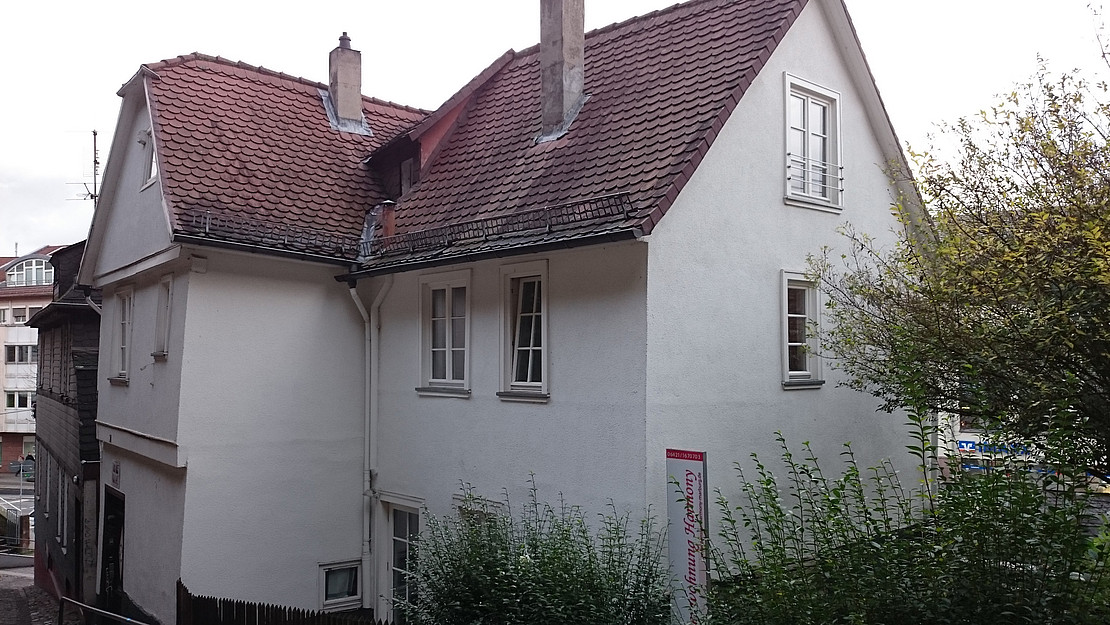This page contains automatically translated content.
Kassel-based Grimm researcher uncovers the secret of the "Cinderella" narrator
 Image: Erhardt
Image: ErhardtEhrhardt, who holds a professorship at the University of Kassel, publishes his findings in the now published volume "Die Marburger Märchenfrau oder Aufhellungen eines nicht einmal Vermutungen erlaubenden Dunkels". According to the book, the woman was named Elisabeth Schellenberg. She was born in 1746 as an illegitimate child, remained unmarried and childless, and spent the last years of her life as a benefice (permanent resident) in the St. Jost infirmary below the former Weidenhäuser Tor. Before that she had lived in a house at the Mühltreppe at the entrance to the old town.
Wilhelm Grimm had the two stories Cinderella and The Golden Bird told and written down by a Marburg woman in 1810. The recommendation came from Clemens Brentano, who had met the old woman as a storyteller - that much was already known. However, while the names of other sources of Grimm's tales have long been known, the identity of the mysterious "Marburg Fairy Tale Woman" has remained a mystery to this day. Ehrhardt based his detective work on clues from Wilhelm Grimm's letters to his brother Jacob and compared them with baptismal and death registers of Marburg churches, lists of residents and account books of the poorhouse hospitals as well as other documents.
Brothers Grimm added French narrative traits themselves
"After evaluating all the documents, only this woman named Elisabeth Schellenberg comes into question," Ehrhardt affirms. "The identification had not been successful until now also because Elisabeth Schellenberg's cousin made this difficult during her lifetime. She concealed Elisabeth's role as narrator from the Grimms, possibly because of her illegitimate birth." In addition, there were erroneous entries in the 200-year-old registers and incorrect assumptions made by researchers. "It is of great importance for Grimm research if the source of Cinderella and The Golden Bird is now known," says Ehrhardt, who also reconstructs Elisabeth Schellenberg's vita in his volume. "The circumstances of her life suggest, for example, that she had no access to literature and little contact with French lore." This supports a finding that a close analysis of the texts also provided: "The Brothers Grimm added traits from French lore or from book fairy tales themselves to these stories," Ehrhardt said. "These findings go against a view that has become popular in Grimm studies in recent decades, according to which the Brothers Grimm were unaware of literary or non-German influences."
"Cinderella" is among the best known and most popular of the Grimm fairy tales. Like "The Golden Bird," it was already part of the first volume and first edition of the Kinder- und Hausmärchen. Jacob and Wilhelm Grimm collected and published the tales during their time in Kassel; however, they were familiar with nearby Marburg from their time studying together. In recent years, the city and University of Kassel have established themselves as a center of international Grimm research. For example, since 2012 the University of Kassel has had an endowed professorship on the work and impact of the Brothers Grimm, held by Prof. Dr. Holger Ehrhardt. It is the only professorship in Germany devoted exclusively to linguists and fairy tale collectors.
Figure 1: No portraits of Elisabeth Schellenberg have survived. A photo (photo: Ehrhardt) of her former home on the Mühltreppe, which is still standing, can be found at
http://www.uni-kassel.de/uni/fileadmin/datas/uni/presse/anhaenge/2016/Schellenberg2.jpg.
Picture 2: The painter Otto Ubbelohde, who came from Marburg, connected the Marburg surroundings with the fairy tales of the Brothers Grimm with his illustrations to the Children's and Household Tales of the Brothers Grimm. Without knowing it, he depicted the house of the fairy tale woman Elisabeth Schellenberg on a Marburg town view. It is located on the left edge. Image at: http://www.uni-kassel.de/uni/fileadmin/datas/uni/presse/anhaenge/2016/M%C3%BChltreppe.jpg
Picture 3: A photo of Prof. Dr. Holger Ehrhardt (Photo: Uni Kassel) under
http://www.uni-kassel.de/uni/fileadmin/datas/uni/presse/anhaenge/2016/ehrhardt_7.jpg
Holger Ehrhardt: The Marburg Fairy Tale Woman or Illuminations of a "darkness not even permitting conjecture" (2016). Boxan Publishing, Kassel.
Contact:
Prof. Dr. Holger Ehrhardt
University of Kassel
Institute for German Studies
Tel.: 0561 804-7455
E-mail: holger.ehrhardt[at]uni-kassel[dot]de